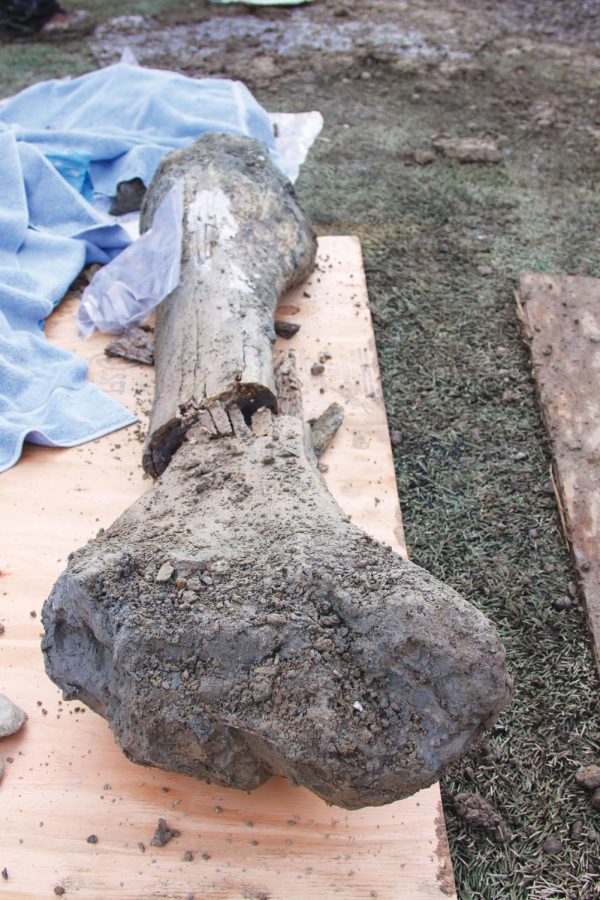Oregon State University discovers mammoth bones near Reser Stadium
January 26, 2016
Reser Stadium tells many stories. Countless football moments and graduations have helped to make up the stadium’s history since it opened in 1953. On Monday there was a discovery that added thousands of years of history.
While working on the Valley Football Center renovation, construction workers found some rather large bones while digging in the north end zone.
They then alerted associate professor of anthropology Loren Davis to come and examine their findings. What was found was believed to be the femur bone of mammoth — an animal that has been extinct for 10,000 years.
“We came across other animals, including what looks like a bison, we have what looks like a horse or a camel potentially and we got a lot more pieces of the mammoth as well,” said Davis.
On Tuesday, Davis and his team continued to dig as construction continued, then removed the bones from the site for further examining.
“I think they got here through natural process, I don’t think there is any other interpretation that makes sense,” he said. “They weren’t hunted by people — that’s clear. They wasn’t any kind of catastrophe. They probably just came into an area that is wet and they were sick or dying and accumulated naturally.”
The remains of the animals are believed to be at least 10,000 years old but will have a clearer timeframe after running tests on the bone.
“These kind of animals went extinct in North America about 10,000 years ago, so that is a minimum age for them. They could be a lot earlier, they be tens of thousands of years. But we will be able to find out the age of them by using a technique called radiocarbon dating.”
Because the bones were animal bones and not human bones, the “Victory Through Valley” project will not be postponed according to athletic department officials. The project is still expected to be completed by the time Oregon State plays their 2016 home opener against Boise State on Sept. 17.
According to Davis, discoveries like what was found are not entirely rare for the Willamette Valley. But being able to find bones underneath a stadium is something that is very unique.
“I think one of the neatest things about this is it just goes to show that there is a whole world of the past that exists under the ground,” said Davis. “It’s so neat that we could find it here at Reser Stadium, that as you are watching a football you can be thinking ‘beneath your feet lie the bodies of extinct animals that relate to the past’—that’s just pretty amazing.”
There will be a press conference open to the public to view and discuss the bones found at Reser Stadium today at 11 a.m. in the Club Level of Reser Stadium.











































































































